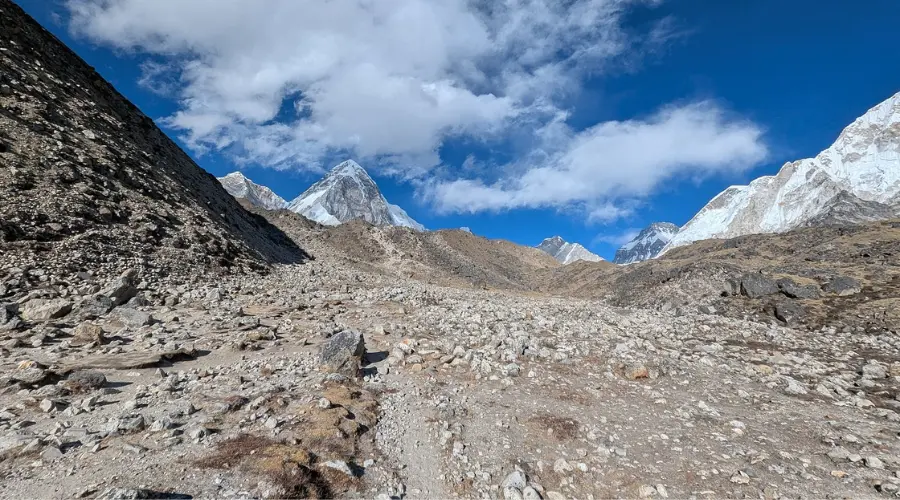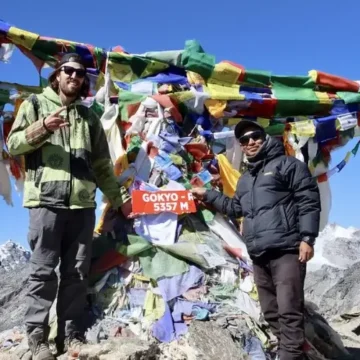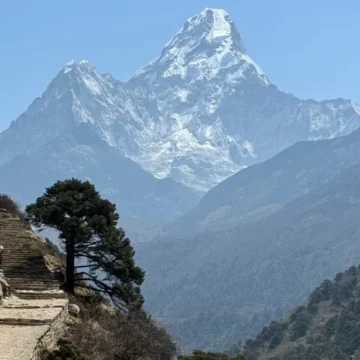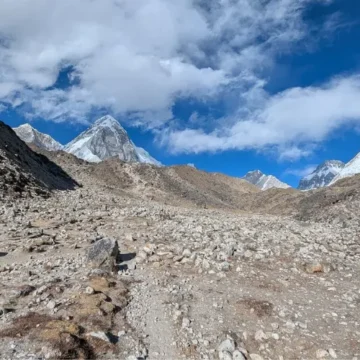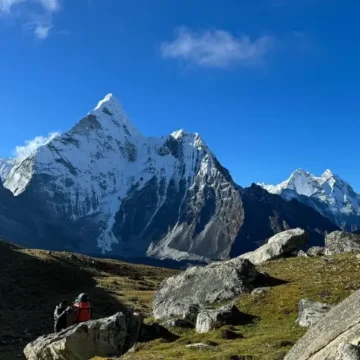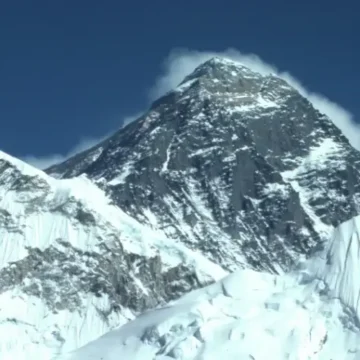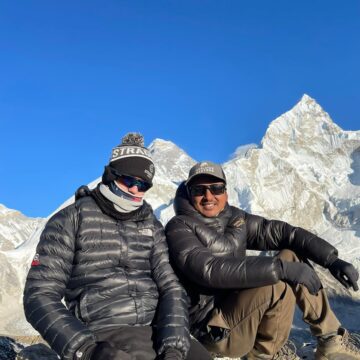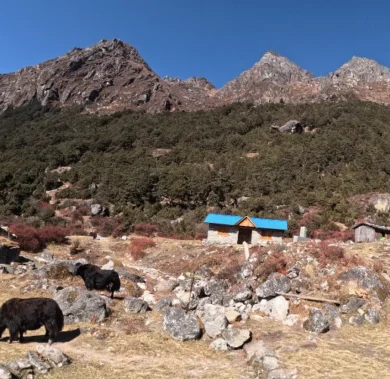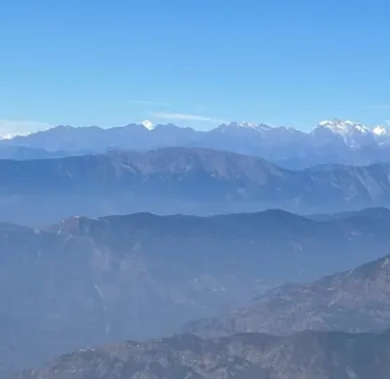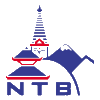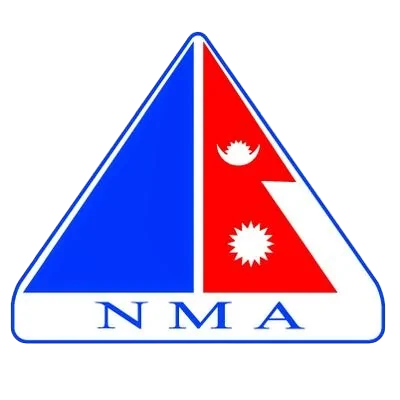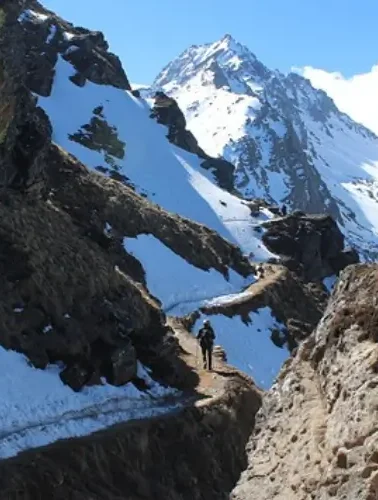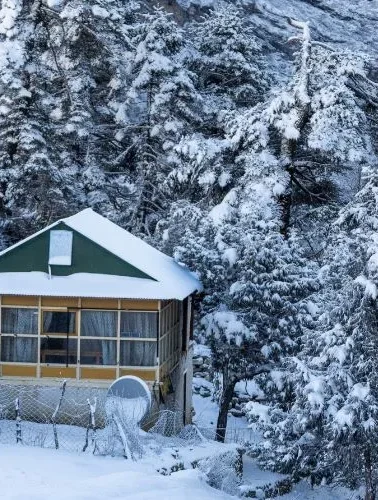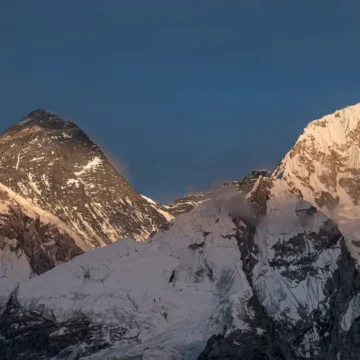
How Challenging is the Everest Three Passes Trek?
Table of Contents
The Everest Three Passes Trek is one of the toughest treks in the Everest region. But for all your hard work, the Everest Three Passes Trek difficulty is compensated for with jaw-dropping views, rich Sherpa traditions, remote village life, and an opportunity to touch the world’s tallest mountain – Mount Everest (8848.86 m/29,032 ft).
Do not plan for pristine Himalayan landscapes; also, prepare yourself physically and mentally for all the Everest Three Passes Trek difficulties that come your way.
Compared to the classic Everest Base Camp Trek, the Three Passes Trek pushes your limit and tests you in all ways possible. Crossing Kongma La, Cho La, and Renjo La, each as high as the base camp and some even higher, is something most trekkers on this route describe to be the toughest.
This 14-17 day-long trek is truly strenuous, thrilling, and soothing. While ascending or descending some of the toughest routes, a delicious meal, a friendly neighbour, a gentle breeze, and glazing sunrise and sunset views make up for it.
So, what adds to the Everest Three Passes Trek difficulty?

High Altitude
The key factor making the Everest Three Passes Trek difficult is, no doubt, the altitude. For about 7 days, you’ll be trekking above 5000 meters in height on a rough, rocky landscape.
Due to the presence of low breathable oxygen at such elevation, the risk of altitude sickness persists constantly. Even the strongest or most seasoned trekker can fall victim to it.
To avoid any hazardous results, you need to be extra careful. Inform your trek guide if you feel uneasy, have a headache, nausea, or dizziness.
Rugged Terrain and Glacier Crossings
Everest Three Passes takes trekkers through some of the most difficult terrains. Above 4000 meters elevation, above Tengboche village, you might not even see bushes.
The trek route features alpine forests in the first few days, then transitions to rocky, steep scree slopes. There are icy glaciers to cross and loose boulders to pass.
Especially around Cho La, you will need to cross the glacier. We recommend that you use crampons for better grip.
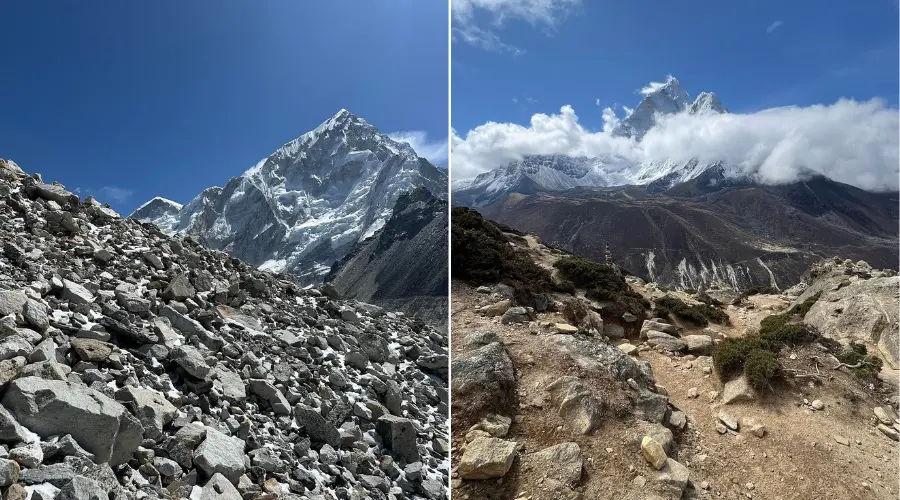
Long Days
It is a relatively long trek, 2-3 weeks. Trekkers need to trek 6-8 hours daily and 9-10 hours on pass days. For that, you can expect your guide to suggest starting the trek as early as possible.
These long treks test your physical as well as mental strength in every possible way.
Not to forget, not many have that many days to spend. So, instead of going on a long Three Passes trek, some might prefer a shorter Everest Base Camp (EBC) Trek or even a shorter Everest View Trek.
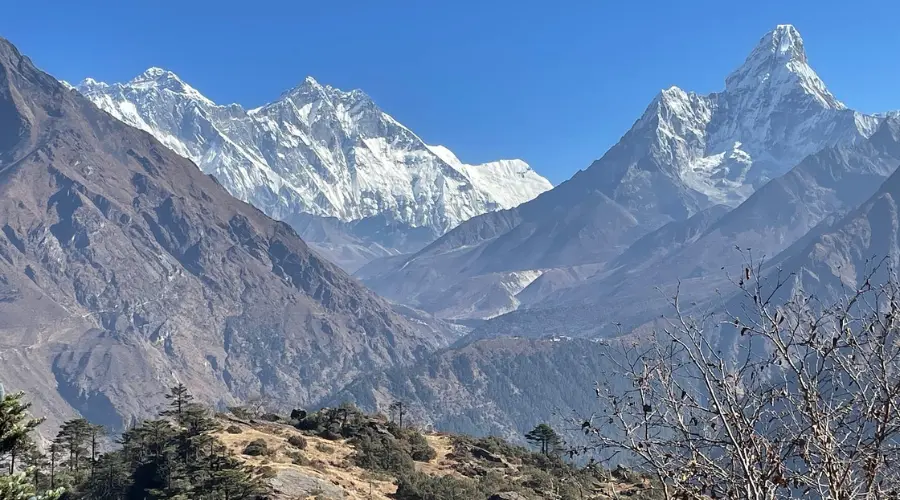
Steep Ascents and Descents
This trek trail includes some of the toughest ascents and descents. The route to the top and then down the passes is not only long but tricky, too.
One small misstep can cause injuries such as an ankle twist or a knee strain. Additionally, they really put pressure on your back. If you’re not fully prepared, you might feel like abandoning the trip.
However, rest assured, the treks organised by us are designed in such a way that your legs are rested enough. If you feel like you need one or two days extra to acclimatise or rest, you can even customise the trek in between.
Unpredictable Weather
Not only in the Three Passes trail but the weather in the Himalayas is unpredictable. The weather can change from good to bad or bad to good within a moment.
Nevertheless, spring (March to May) and autumn (September to November) are considered the best trekking seasons. But as mentioned, even in these best seasons, the weather could get bad. So, it is better to be safe than sorry.
Especially the morning weather is suitable for trekking.
High Winds and Sun Exposure
In the high mountains, there are constant strong winds. Especially around midday, cold, strong winds blow. Being exposed to these winds for a longer duration can cause chills and cracked skin. Sometimes, they even cause dryness and difficulty in breathing, leading to altitude sickness or hypothermia.
Sun Exposure
As you trek higher, you are more exposed to high UV rays. If you are exposed to the sun for a longer duration, you will get sunburn. Then you’ll feel like burning and get blisters.
Additionally, burn chills, red skin, and peeling are common. Some might even feel nauseous and dizzy.
Remote Location
Besides physical strain, this trek tests your mental resilience, too. The trek passes through some of the remotest trails in the Everest region. In some of the sections, there isn’t even a single house. So, you might want to carry packed food for that route.
Likewise, some might get frightened due to the silent, eerie winds. Not to forget, if you get injured, the only possible way for rescue is a helicopter in such remote sections.
However, you’ll be accompanied by your guide, if you’re trekking in a group, even better.
So, better be strong mentally and be prepared for anything that comes your way.
Technical Challenges
It’s not just a normal walk in the garden. You’ll need to cross glaciers, hop on boulders, and hike through icy, treacherous snow. So, you need to learn how to use crampons and some basic skills to navigate through the glacier trail.
How to Tackle the Everest Three Passes Trek Difficulty?
The Everest Three Passes Trek difficulty isn’t just because of high altitude or terrain, but a combination of other factors. It’s 50% physical and 50% mental. As you are preparing for this trek physically, you also need to be prepared mentally.
Let’s see how we can handle the Everest Three Passes Trek difficulty like a pro.
Mental Preparation
- If not directly, being mentally prepared and having positive thoughts will instantly brighten the mood of the trek. Also, knowing what to expect in the trek prepares you for any kind of obstacle that comes your way, and then you take precautionary measures.
- A good night’s sleep is best. Avoid sleeping during the day.
Altitude Preparation
- The best way to tackle altitude sickness is acclimatization. Make sure that your trek itinerary includes at least 2-3 acclimatization days. Or you can also follow the ‘climb high, sleep low’ principle. Use Diamox to reduce the effects of altitude sickness.
- Break the steep ascents and descents into segments, focusing on 10 steps at a time.
Physical Training
- Do some cardiovascular and leg exercises at least 2-3 months before the trek. You can do squats, step-ups, short hikes (with some weight), lunges, and other exercises.
- It’s better to consult your physician if you’re fit for the trek or not.
Food and Water Considerations
- Eat healthy and easily digestible food. We don’t suggest you eat meat as you trek to higher elevations. As they do not have a proper refrigeration system, the meat might be stale.
- Stay hydrated. Drink at least 3-4 litres of water daily. And avoid drinking any alcoholic beverages, as they will dry you up.
Long Days
- It’s a long trek. So, don’t rush. Walk at a slow and steady pace. Take breaks and let your body rest. Even if for a couple of minutes, take a rest when needed.
Use Proper Trekking Gear
- Wear high-ankle trekking boots with a good grip for better ankle support. We recommend you break in your trekking boots before the trek.
- Use a kneecap and trekking pole for knee support. Carrying crampons for icy paths and glacier crossings is suggested.
- Pack extra warm clothing. Packing according to the season you are trekking is important. For instance, pack waterproof or rain covers to stay dry during rain and snow, a thick windproof jacket for winter, and breathable, comfortable clothes for spring and autumn treks.
Weather Preparation
- Start your trek as early as possible for the best views and stable weather.
- Check weather forecasts daily and learn how to read weather signs, like cloud shapes and movements, wind movements, etc.
- Use a buff or scarf to protect your neck and face from cold winds. Also, we suggest you apply petroleum jelly or skin balm on your cheeks and nose to prevent cracking.
- Use sunscreen (SPF 30+) every 2-3 hours to be protected from sunburn. Additionally, wear UV-blocking sunglasses to protect the eyes from wind, sun, and dust.
Tackling Remoteness
- Pack some snacks for the trek. As the route is quite isolated, there might not be any teahouse or shop where you can eat or buy.
- Listen to your guide at all times. They are Himalayan expert who have walked the path several times.
- Carrying a basic first-aid kit would be wise.
- Purchase insurance that covers high-altitude trekking, medical bills and helicopter evacuation.
Everest Three Passes Vs Everest Base Camp Trek
Let’s compare two of the best treks in the Everest region, and then you decide for yourself which is ideal for you.
| Feature | Everest Base Camp Trek | Everest Three Passes Trek |
| Max Altitude | 5550 m (Kala Patthar) | 5,535 m (Kongma La) |
| Technical Difficulty | Moderate | High (includes glacier and snow crossing) |
| Trek Duration | 12–14 days | 17–21 days |
| Terrain Type | Trail-based, busy | Remote, steep, glacier, snow |
| Altitude Risk | Moderate | High |
| Isolation | Low | High |
| Mental Demands | Moderate | Very High |
Clockwise vs Anticlockwise Route: Which Is More Difficult?
The route you choose, clockwise or anticlockwise, can significantly impact the difficulty of the trek. Most trekkers choose to go anticlockwise, starting and ending at Lukla or Namche Bazaar, first reaching EBC and then crossing Cho La and Gokyo and back to Namche.
The Everest Circuit trek route is relatively easier and shorter than the clockwise route. By the time you reach higher-altitude villages, your body gets habituated, and there are fewer steep climbs.
Whereas the clockwise circuit route immediately starts with a trek from Namche to Thame and then crosses Renjo La Pass. As you’re exposed to high altitude within a short time, there is a high chance of altitude sickness.
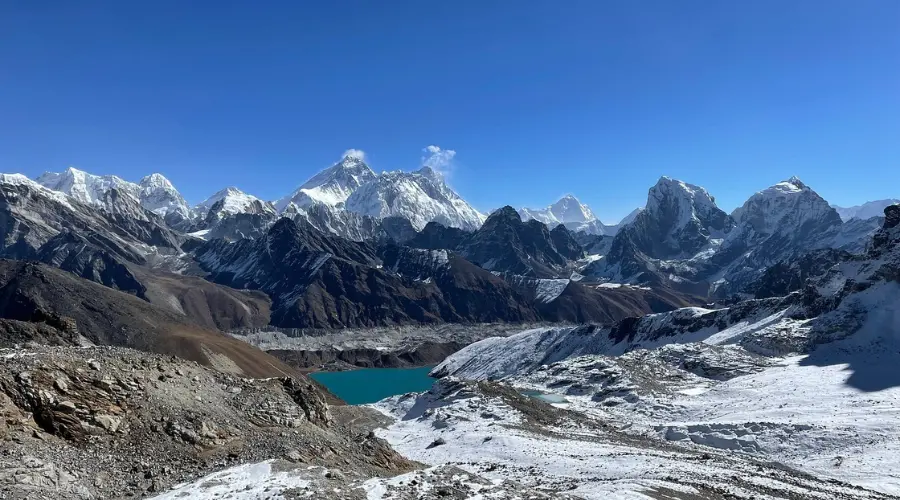
Additionally, the facilities are also limited. Starting a trek first, with all the difficulties that you can think of, can be really depressing for some. Meanwhile, the idea of being adventurous and challenging at first, and then easier and more comfortable towards the end, could be relieving for some.
Though both routes are the same distance and elevation, the anticlockwise route is safer and more manageable. Especially if you’re a first-timer, we suggest you choose the anticlockwise route.
Common Reasons for Trek Failure
Understanding why some trekkers fail to complete the loop gives useful insight into the Everest Three Passes Trek difficulty.
- Skipping acclimatization days to save time
- Poor weather planning, especially in late November or early March
- Underestimating physical demands, leading to fatigue-related injuries
- Improper gear for icy conditions (e.g., no spikes for Cho La Glacier)
- Lack of flexibility in itinerary (not accounting for buffer days)
Is this Trek for You?
It’s relative if this trek is suitable for you or not.
- Are you comfortable with 2+ weeks of trekking?
- Have you even trekked over 4000 meters?
- If there is a delay or cancellation in Lukla flight, a snowstorm, or an isolation, are you okay with it?
- Are you ready for discomfort and mental pressure?
If all your answers are “Yes”, then the Everest Three Passes Trek difficulty won’t stop you from everything it has to offer.
Can I Do a Three Passes Trek Without a Guide or Porter?
Though it is possible to do the Everest Circuit Trek (Everest Three Passes Trek) without a guide or a porter, we wouldn’t suggest doing so.
Solo trekking on such remote and high-altitude trails is significantly challenging and risky. The trail includes unmarked glacier crossings, steep scree descents, and remote sections where help is hard to find.
Also, the route might be tricky, particularly during snow or fog. One wrong step can lead to a serious injury.
A guide isn’t there to help you navigate; they are your companion for the route. They will help you assess the weather, pass the time, and provide you with insight into the landscape and culture.
Likewise, imagine carrying a bulk load of a backpack and walking for around 3 weeks on a rough Himalayan terrain. You probably will be walking with bent or strained shoulders. Your only target will be to reach your next destination and rest.
That is where porters will become heroes for you. They will carry all your load, and you’ll only carry your daypack. Then you can enjoy the trip to the fullest.
Not only will they carry your load, if needed, but they will also carry you to a safer location in case of emergencies.
Going solo also means handling all logistics, permits, accommodation booking, and even emergency evacuation, all by yourself. Although you will have flexibility, handling everything all on your own surely is hectic.
So, having a guide and a porter is a logical decision.
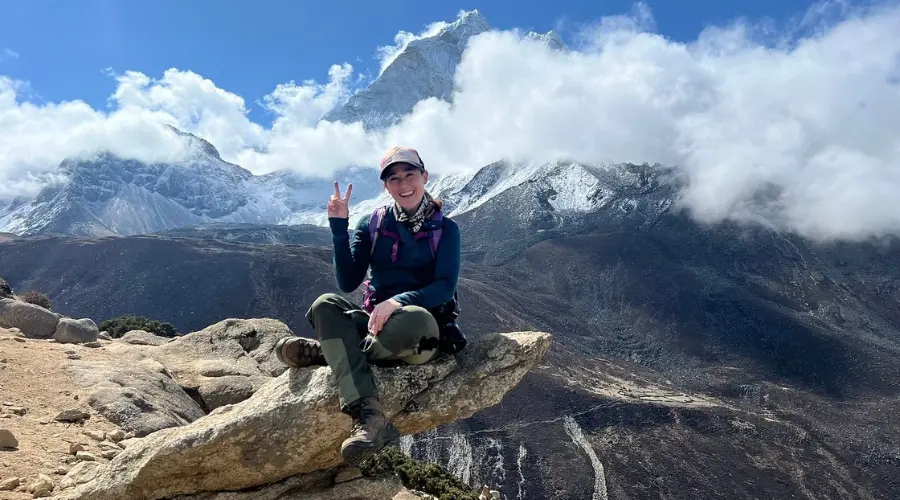
Everest Three Passes Trek With Himalayan Masters
We, Himalayan Masters, are the best trekking agency in Nepal, offering the best possible services and itineraries at the most affordable price. Choosing Himalayan Master for the Everest Three Passes Trek means you are receiving a professional trekking guide and carefully planned itineraries.
With our stellar ratings on TripAdvisor and Google Reviews, we have successfully guided hundreds of trekkers on a Himalayan adventure. Starting from airport pickup, arranging permits, accommodation, meals, guide, and porters to successfully completing the trek and final see-off, we are here for you.
If you’re planning for or have any confusion, do not forget to contact us. You can get in touch with us via our email ([email protected]), or you can WhatsApp us at +977-9823636377.
Want to know more?
Speak to an Expert


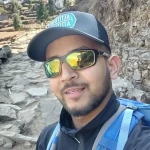


Sandip Dhungana
Nepal 🇳🇵
Whatsapp: +977-9823636377

